Visiting Dong Nai
Nearby Attraction
Located in Tran Bien ward, Lac Hong University is blessed with beautiful natural and cultural landscapes such as Tran Bien Temple of Literature, Buu Long Tourist Area, Cu Lao Quarter, and more.
Tran Bien Literature Temple
Tran Bien Temple of Literature was originally built in the late 17th century in Tran Bien Ward, Dong Nai Province. Similar to the Temple of Literature in Hanoi, Tran Bien served as a cultural and educational center for students in southern Vietnam.
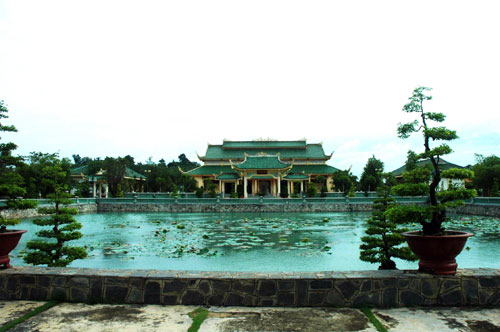
A view of Tran Bien Temple of Literature
Recently, Tran Bien Literature Temple was rebuilt on the site of the ancient Literature Temple in Tran Bien Ward, near Buu Long Cultural Park, approximately three kilometers from the center of Bien Hoa City. The temple has emerged as a peaceful and serene space, featuring curved domes and majestic halls shaded by green trees that harmonize with the surrounding environment.
The first sight upon entering the temple is Van Mieu Mon (the Gate of the Temple of Literature). From Van Mieu Mon, visitors can see the Tran Bien – Dong Nai traditional stele house, Khue Van Cac, Tinh Quang Lake, Three Entrance Gate (Cong Tam Quan), the stele house of Confucius, and the main temple dedicated to the forefathers, respectively. Within the temple grounds stands a large stele inscribed with the saying “Talent is the life-sustaining element of the nation.”
On one side of the temple are Long An and Buu Long mountains, immensefields with flying herons, and distant rooftops and trees. On the other side flows the majestic Dong Nai River, mingling with smaller river branches to create a charming and poetic landscape. Opposite this is Thanh Long Bach Ho, a high and dry area aligned with feng-shui principles.
Covering an area of 20,000 square meters, the temple complex exhibits architectural styles that reflect the nation’s cultural, educational, and heroic fighting traditions.
Tran Bien Temple of Literature is also a place to worship the ancestors of Vietnam and Southern Vietnam, as well as to preserve and record the names of teams and individuals who have achieved significant accomplishments for national festivals and cultural activities.
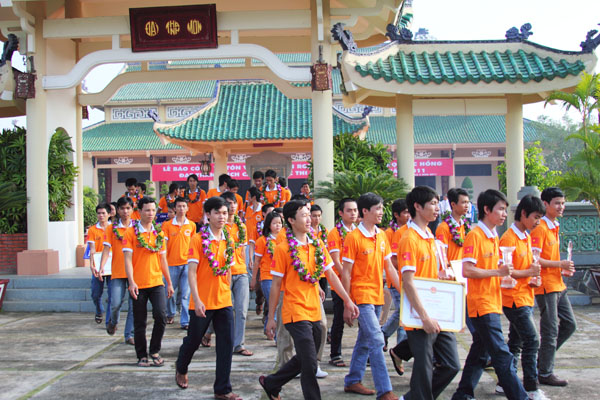
Lac Hong University's Robocon team attends the ceremony to report achievements held at Tran Bien Temple of Literature.
Coming here, students have opportunities to learn a great deal about the historical values and the tradition of encouraging and enjoying study of southerners. Besides, Tran Bien Literature Temple is an indispensable destination for studying groups, picnics, cultural activities, or simply a sightseeing and relaxing place for students.
Buu Long tourist area
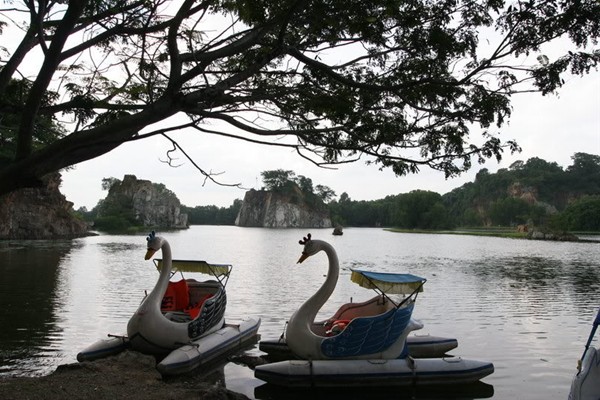
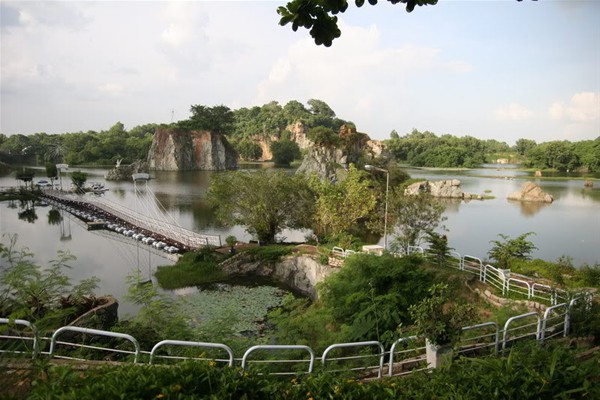
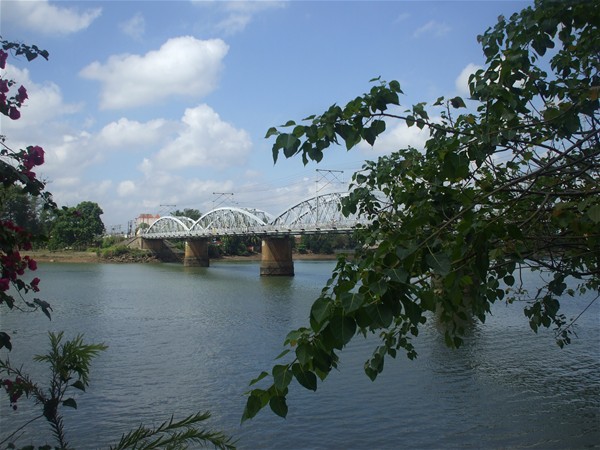
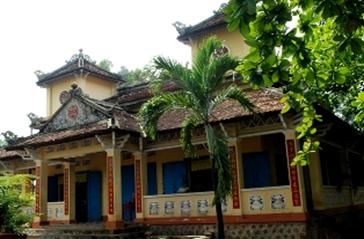
Dai Giac pagoda - Cu Lao quarter is recognized as the National Historical Relic.
Located in Hoa Binh hamlet, Giang Dien commune, Trang Bom district, Dong Nai province, 22 km from Bien Hoa city, Giang Dien Waterfall Tourist Area, covering 67ha, has become an ideal destination for young people and families at weekends or on holidays.
With its valley, hills, forests, waterfalls, varieties of strange flowers blooming all the year round, fresh climate and wild nature, Giang Dien Waterfall Ecological Tourist Park is often referred to as Da Lat in the East. Coming to Giang Dien Waterfall , tourists can take sightseeing by walking on stone-paved roads and trails full of many species of flowers and plantations; enjoy private moments under the shadow of trees or on the smooth green grass cover; visit entertainment areas, flower gardens, pools, etc. Wallowing under cool waterfalls brings tourists relaxing moments and wonderful feelings.
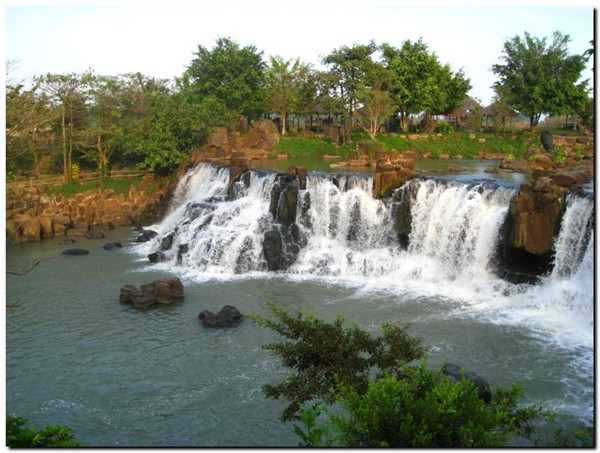
Giang Dien’s restaurants, kiosks, stalls, services, sentry-boxes and flower gardens were harmoniously designed and constructed in the middle of ecological scenery. There are various kinds of travel services suitable for all kind of tourists like stream bath & waterfall bath, double bike, sightseeing taxi or train, food & beverage, camping rental, fishing, camp-fire, folk games, children plays and team playing, karaoke, billiard, roller-skate, singing club, wedding & ceremony celebration, funny farm visiting, etc, especially bungalows and restaurants with all conveniences.
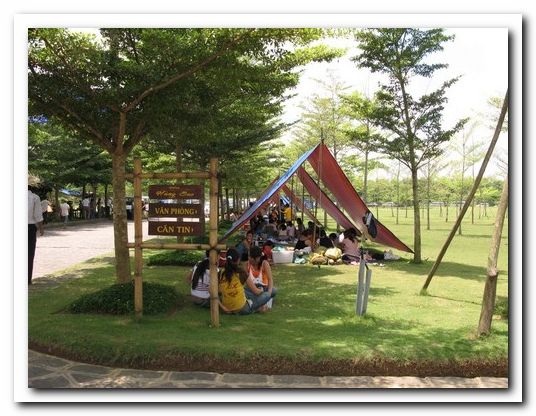
With its beauty and convenient services, Giang Dien Park is an ideal choice for young people who like to discover nature.
Tan Trieu pomelo village
Tan Trieu pomelo village belongs to Tan Binh commune, Vinh Cuu district, Dong Nai province, 3km from Bien Hoa city. The village remains a peaceful and quiet place with fruitful pomelo gardens and delicate smell.
Tan Trieu is the oldest village in Dong Nai, lying along the riverside, covered by canals, making an isolated isle with an only road to the village. Tourists can come to Tan Trieu by boat or by individual vehicle (car, motorbike) through National way 24. Local people will guide them to visit the village, enjoy specialities like pomelos, pomelo salad (goi buoi) and pomelo wine. Every year, Tan Trieu welcomes domestic and foreign tourists to the village to enjoy the beauty and savor the taste of the pomelos. Tan Trieu pomelo is not only famous in the locality, but also nationwide and overseas.
Tan Trieu pomelo has many other species such as Thanh pomelo, Xiem pomelo, guava pomelo, sour pomelo, yellow leaf sweet pomelo, and Duong Num pomelo, He pomelo, Long pomelo, Mrs. Van pomelo and so forth. Each kind of pomelo has its special taste. For example, the Thanh pomelo is juicy and fruitful. Each season, a tree can produce 400- 500 fruits. The Xiem and Long have small size but sweet taste. The most tasty pomelos are Duong la cam and Duong num. The Oi pomelo has a small size but a special feature – it can be kept for more than a half of a year but remains sweet.
In Tan Trieu, many people know Mr. Nam Hue (known as Mr. Nam), the owner of pomelo village eco-tourism area. He is the first one to open this type of ecotourism in a quiet village along the bank of Dong Nai river with specialities from pomelos and rural dishes. There are many kinds of pomelos in Tan Trieu. All of them taste delicious due to the rich soil along the riverside. Mr. Nam chooses Duong Da Xanh pomelo to make goi buoi. Anyone who once enjoyed goi buoi will easily recognize Tan Trieu goi buoi because of its special taste and recipe. Goi buoi in other places is mixed with dried cuttlefish that is torn to pieces while Tan Trieu goi buoi is mixed with freshwater crayfish (tom song). When enjoying goi buoi, visitors will experience a little bit sour, mildly sweet tastes mingled with sweetness of crayfish, nutty flavor of peanuts, hot taste of chili and savor of rau thom. In addition, a piece of crispy girdle cake covered with red shrimps will make the goi buoi tastier. Besides goi buoi, tourists can buy pomelo juice, pomelo wine or Duong Da Xanh pomelo as gifts for their relatives. One special feature of Duong Da Xanh pomelo is that it can be kept for a long time but still tastes good.
Cultivating pomelos is the traditional career of the Tan Trieu people. Tan Trieu pomelo gardens have made a huge improvement to the quality of life of local people as well as being an attractive ecotourism site for tourists. Tan Trieu pomelo has occupied the domestic market and been exported to some countries in the world such as the Netherlands, Germany,...
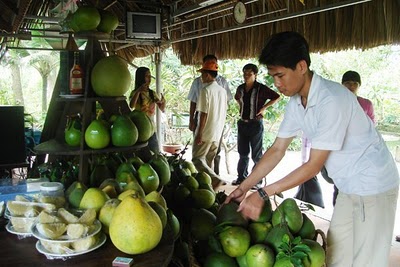
Tan Trieu pomelo village

